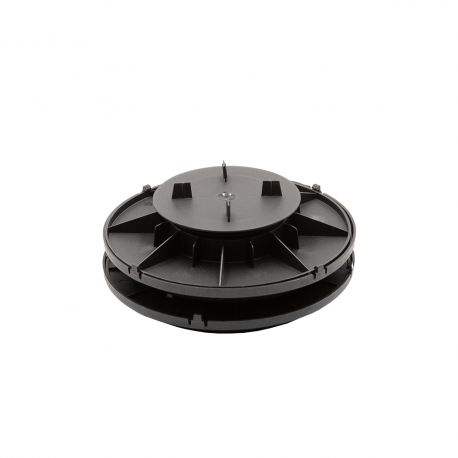

Get 5% off your next order by signing up.




Self-leveling pedestal for tiled terrace / concrete slab Size: 50/65 mm. For more comfort, consider anti-noise damping wedges! Wedge sold separately.

Expédition des commandes en 24/48h

Livraison offerte dès 500€

Paiement en 3 ou 4x avec Oney

Service client du lundi au vendredi

The self-leveling paving pedestal is adjustable from 50 to 65 mm to adapt to the constraints of your land. Its particuliarity ? It is composed of a self-leveling plinth at its base. This self-leveling disc allows it to catch up or create up to 5% slope over 1 meter. It is therefore a slab terrace pedestal perfect for laying on sloping or uneven ground. Solid, resistant and stable, it ensures a long service life for your tiled terrace on pedestals.
Before starting your terrace on pedestal construction site, it is essential to think about it: what type of installation do you want? what will be the surface of your terrace? etc
For laying, several layouts are possible: straight laying, staggered laying or diagonal laying… the type of laying chosen will depend on the layout of your slab terrace pedestals. Once you have chosen the surface and type of laying for your future tiled terrace, put your ideas down on paper.
The layout plan is a scale sketch of your terrace. It represents its shape, its dimensions... But also the pedestals, placed in the right place and correctly spaced (the width of your pavings). This drawing will allow you to accurately calculate the number of materials needed, saving you time and money. In short, an essential step!
Tip for calculating slab terrace pedestals: a pedestal is supported by 4 pedestals, 5 from 60 x 60 cm and 6 from 60 x 120 cm.
Preparing the ground is a mandatory step, even if you opt for self-leveling pedestals. It will allow you to stabilize the ground and guarantee your terrace on pedestals many years of use. Indeed, by working the ground you avoid the inconveniences linked to climatic conditions (drought and heavy rain) and the weight supported by your terrace. By preparing the ground, you prevent your tiled terrace on pedestals from moving.
In addition, self-leveling pedestals are ideal for laying on crushed gravel. Indeed, a ground preparation with gravel never offers a perfectly flat ground. This is where the self-leveling paving terrace pedestals come in brilliantly, adapting perfectly to your uneven ground.
With self-leveling paving pedestals, simplified floor preparation is recommended. Thus, it will cost you little in materials:
In order to prevent your terrace from shifting over time, simple, quick and inexpensive ground preparation will be useful.
Laying a tiled terrace on pedestals is very simple, especially with self-leveling pedestals! Count a day of work to get your new paving terrace on pedestal out of the ground!
We recommend a few accessories to make it easier for you to install your new slab terrace and to increase your comfort of use:
Important: after each laying of the paving, be sure to check the flatness of the terrace using a spirit level.
Data sheet
Reference: JOU-IH020030DC10000

Reference: PRO-SUPAL-SUPA4

Reference: RIN060090DAUT

Reference: JOU-IH055075DSN0000

Reference: JOU-IH130230DNC0000

Reference: JOU-IH080140DS10000

Reference: JOU-IH028040DNC0000

Reference: JOU-IH040055ANC0000

Reference: JOU-IH055080DNC0000

Reference: JOU-IH040060DS10000


Self-leveling pedestal for tiled terrace / concrete slab Size: 50/65 mm. For more comfort, consider anti-noise damping wedges! Wedge sold separately.
check_circle
check_circle